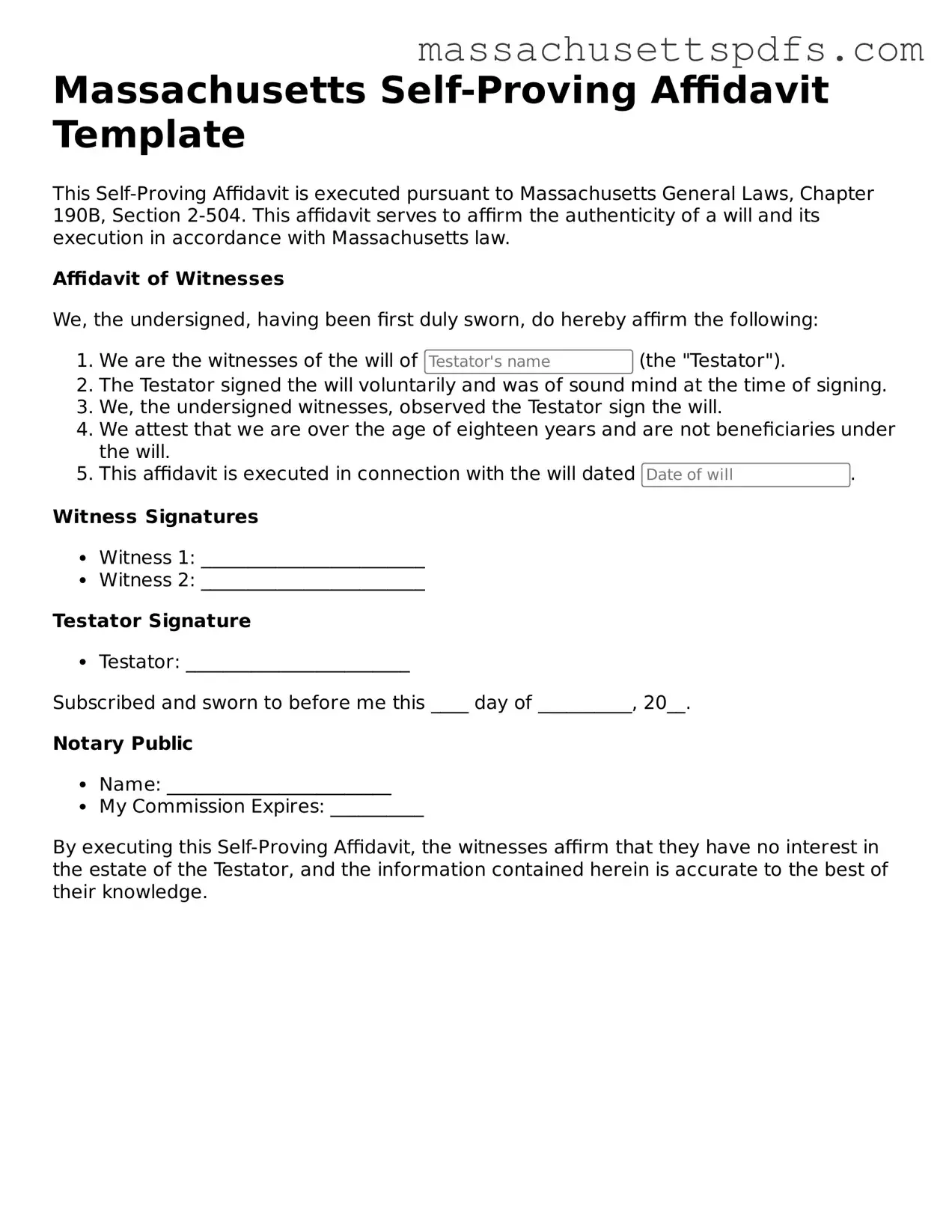Guide to Writing Massachusetts Self-Proving Affidavit
After gathering the necessary information and documents, you are ready to fill out the Massachusetts Self-Proving Affidavit form. This form is an important step in the estate planning process. It allows for the validation of a will without the need for witnesses to testify in court. Following the steps below will help ensure that the form is completed accurately.
- Begin by obtaining the Massachusetts Self-Proving Affidavit form. You can find this form online or through legal stationery stores.
- At the top of the form, write the name of the deceased individual whose will is being affirmed.
- Next, include the date when the will was executed. This is the date when the deceased signed the will.
- Provide the names and addresses of the witnesses who were present at the signing of the will. Ensure that both witnesses are identified clearly.
- In the designated area, each witness must sign the form. Witnesses should also print their names and provide their addresses beneath their signatures.
- The affiant, who is typically the person who signed the will, should then sign the affidavit in the appropriate section.
- After signing, the affiant must date the affidavit. This date should reflect when the affidavit is being signed.
- Finally, make sure that the affidavit is notarized. A notary public will verify the identities of the signers and witness their signatures.
Once the form is completed and notarized, keep it with the will and any other important documents. This will help ensure that your wishes are honored and that your estate is handled according to your intentions.
